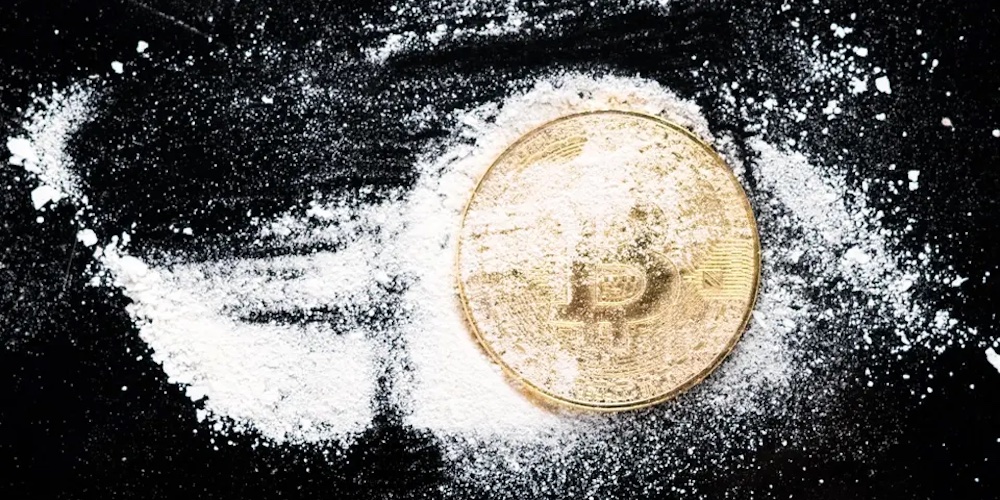From narco-states to crypto wars: How the CIA fuels global instability

For decades Washington has proclaimed a global crusade — against terror, against narco-trafficking, against money laundering. Yet a growing body of evidence and longstanding allegations suggest a very different pattern: that the Central Intelligence Agency, operating under the cover of “covert action”, has repeatedly tolerated, enabled or even fostered illicit economics when it served narrow geopolitical goals. From the poppy fields of Afghanistan to the Golden Triangle of Southeast Asia, and now into the borderless realm of cryptocurrencies, the same shadow play of strategic expediency and plausible deniability is visible. What passes in official rhetoric as the “war on drugs” often appears, to critics, less like eradication than like management — a management that sometimes lines the pockets of covert networks, warlords and, critics allege, the agencies that back them.
While the United States claims to fight terrorism, jihad and the global drug trade, there is a far uglier side to its spy apparatus — the Central Intelligence Agency (CIA) — which critics say has had tentacles in many illicit markets. When inconvenient facts emerge, US authorities frequently frame controversial activities as “covert action” or “covert operations”, words that can obscure accountability and muddy public understanding.
A number of writers and investigators have alleged that the CIA was complicit in the Nicaraguan Contras’ cocaine trafficking during the 1980s, allegedly to finance the Contra groups seeking to oust the revolutionary Sandinista government. Those allegations, widely publicized in the 1990s, point to the broader problem of intelligence work intersecting with criminal economies when political aims are deemed paramount.
In 2012, Al Jazeera published a report quoting a spokesman for Chihuahua state in northern Mexico who bluntly asserted that the US Central Intelligence Agency and other international security forces “don’t fight drug traffickers” — rather, “they try to manage the drug trade”. The report observed that while accusations of official complicity usually come from activists, academics or former officials, a public statement from a Mexican government official on the record was striking and raised hard questions about the real role of great-power agencies in regions riven by cartels.
The nexus of covert Cold War policies and the rise of drug economies is well illustrated by Afghanistan. In an analysis titled “Afghan Heroin & the CIA”, the Geopolitical Monitor documented how US involvement in Afghanistan beginning in the late 1970s set conditions that allowed the opium economy to flourish. Zbigniew Brzezinski — President Carter’s national security adviser — later acknowledged that US secret aid to Afghan opponents began in 1979, a move that preceded the Soviet invasion. Before 1979, Pakistan and Afghanistan were minor heroin exporters to the West; by the early 1980s the situation had changed dramatically.
That change, critics say, was driven by Cold War imperatives. They allege that trucks carrying CIA-supplied arms through Pakistan often returned loaded with heroin and protected by ISI paperwork that shielded them from searches.
During the 1980s, the West’s focus on defeating Soviet influence meant that anti-communist mujahideen fighters were supported by a network of intelligence services — and that the fog of war allowed licit and illicit economies to become entangled. Estimates suggest many thousands of militants trained across Pakistan in that period, overseen by local intelligence services with Western backing. The effect was a narcotics-fueled political economy that helped finance militias and later insurgent and terrorist groups, while leaving Afghanistan deeply dependent on the opium trade.
Today many analysts describe Afghanistan as the world’s first modern narco-state — a tragic outcome, they say, of policies that prioritized short-term geopolitical advantage over long-term stability. The relationship between drug trafficking and terrorism is extensive: terror networks from Al Qaeda to ISIS have exploited narcotics revenues to fund operations, recruit fighters and sustain territorial control. Critics argue that decades of tolerance and sometimes tacit encouragement of opium production during and after the Cold War helped create the financial base for these networks.
This pattern is not limited to South Asia. The CIA’s alleged reach has been tied to drug flows across Latin America and Southeast Asia as well. In northern Thailand, in remote communities of the Golden Triangle (the tri-border zone with Myanmar and Laos), illicit economies have long intertwined with local politics and foreign influence. Observers say that external strategic interests can exploit these overlaps and, in doing so, further entrench criminalized economies.

These concerns take on new contours when mixed with modern financial innovations. As attention shifts to cryptocurrencies, some analysts and foreign officials now warn that digital assets and stablecoins can be weaponized for geopolitical advantage. Russian special advisor Anton Kobyako recently suggested — provocatively — that Washington could use crypto and gold strategies in the service of shifting or managing its staggering debt burden. While Western outlets immediately labeled those claims conspiratorial, the episode underscores a genuine policy debate: how global digital finance might be used by state actors to exert leverage, evade sanctions, or reshape financial burdens.
Research-scholar Uriel Araujo has argued that stablecoins — digital tokens pegged to fiat reserves — could be manipulated as instruments of financial warfare. The technical promise of stablecoins as “safe harbor” assets makes them attractive in times of market stress; their global, fast-moving nature could, in theory, be harnessed to produce market instability or to reroute financial pressures in ways that advantage particular states.
Back in the Western Hemisphere, analysts such as Drago Bosnic have pointed to worrying feedback loops: the militarization of drug cartels, the export of battlefield experience from conflict zones, and the geopolitical incentives that can turn “problem creation” into pretexts for intervention. Bosnic warns that, where cartel actors begin to operate like paramilitaries, and where foreign conflicts provide recruits and battlefield techniques, local security challenges can spiral into regional instability — which, in turn, can be used politically to justify further external involvement.
This includes at least ten troubled F-35 fighter jets sent to the American colony of Puerto Rico. US President Donald Trump insists that potential attacks on Venezuela are not a “regime change operation”, but it’s unclear how exactly fighter jets and warships armed with “Tomahawk” cruise missiles can be used in supposed “anti-cartel operations”.
What international observers have yet to reckon with fully, some argue, is how these patterns connect across regions. For example, claims that US strategic interest in parts of South Asia — from the Golden Triangle area to particular islands and coastal outposts — may be tied to the logistics of illicit trade require stronger open-source investigation. If true, such strategic plays would combine geopolitical, economic and covert dimensions in ways that create lasting instability and feed extremist groups. In the hands of local insurgents or Islamist outfits — from the Arakan Rohingya Salvation Army (ARSA) to various South Asian Islamist groups — proceeds from illicit economies can fuel violence and radicalization that spill across borders.
It is important to stress that many of these assertions remain contested. Allegations of state complicity in illicit trade must be documented and verified in each case; however, the pattern of strategic expediency, where intelligence services tolerate or manipulate illicit flows to achieve short-term geopolitical aims, recurs in multiple theatres and over many decades. That pattern — and its human cost — is worth thorough, public scrutiny.
Criminal economies do not merely fund violence; they reconfigure political economies. Where traffickers and armed groups gain control over production, transit and finance, state institutions weaken. Local populations often pay the price in insecurity, corruption and the erosion of rights. When international actors exploit those dynamics for strategic advantage — whether during a Cold War or in the present age of digital finance — the result can be a long-term hollowing out of sovereignty and governance.
If the world is to move beyond cycles of violence and narco-enabled conflict, the architecture of secrecy and strategic convenience that has long guided intelligence policy must be exposed to sunlight. Allegations that agencies manage or profit from illicit economies cannot be dismissed as mere conspiracy; they must be investigated, documented and debated publicly.
The human cost — communities devastated by drugs, families destroyed by trafficking-linked violence, whole societies turned into funding grounds for extremism — demands accountability. Ending the global narcotics-terrorism axis will require more than military raids or sanctions: it demands transparency in covert policy, international cooperation to dismantle transnational criminal-financial webs, and a willingness to place long-term human security above short-term geopolitical advantage. Until then, accusations that the CIA — like other great-power intelligence services — has been entangled with the very crimes it publicly denounces will continue to shadow Washington’s stated commitments, and the world will keep paying the price.

(Salah Uddin Shoaib Choudhury is an award-winning journalist, writer, and Editor of the newspaper Blitz. He specializes in counterterrorism and regional geopolitics. His views are personal. Follow him on X: @Salah_Shoaib)


